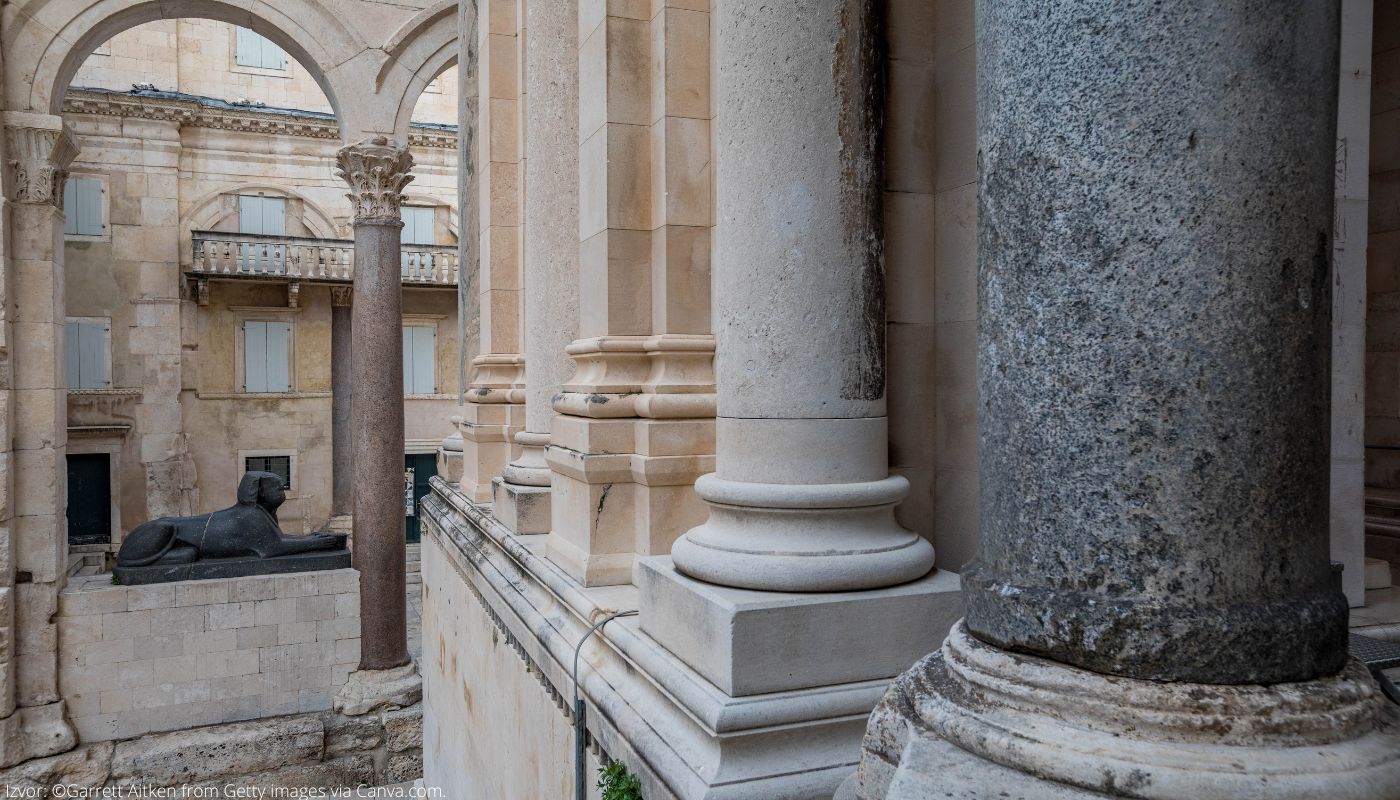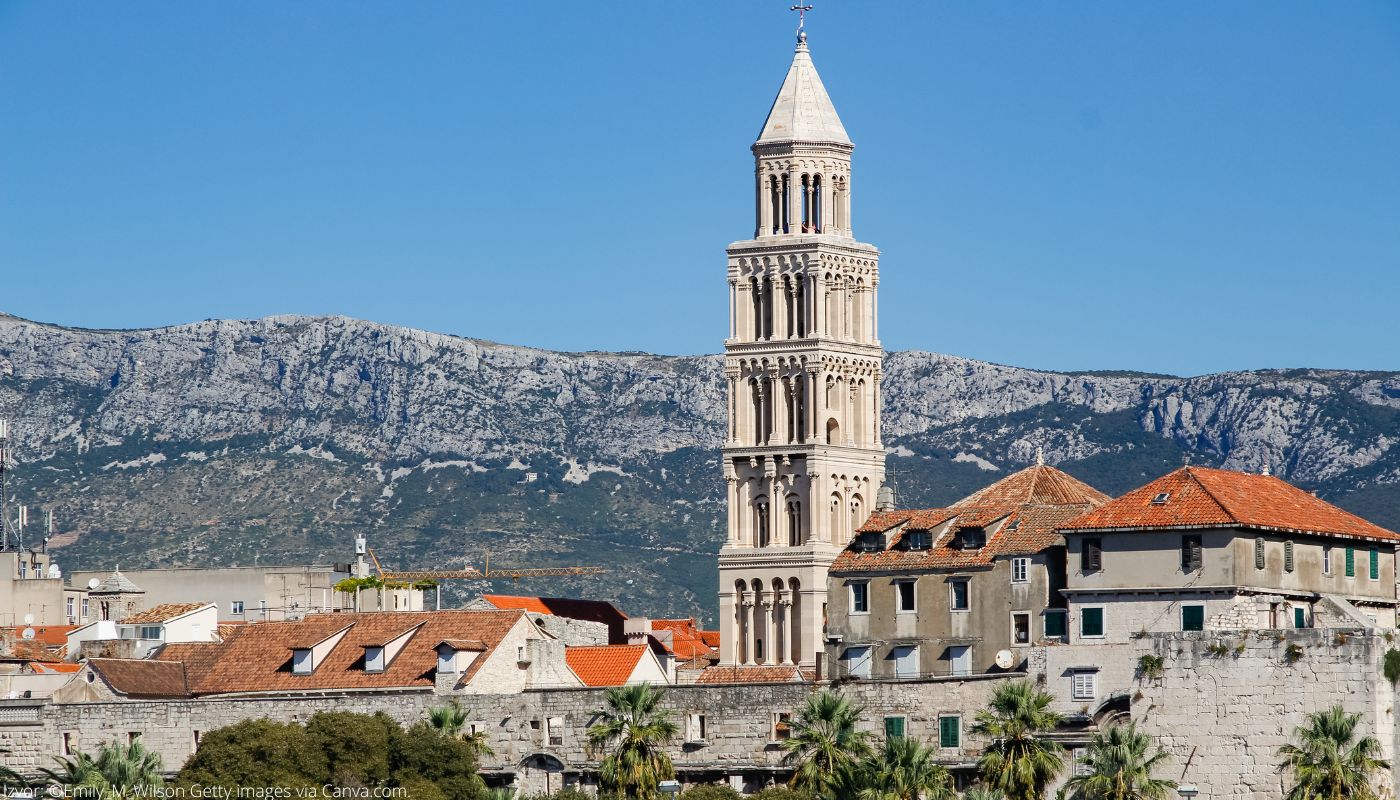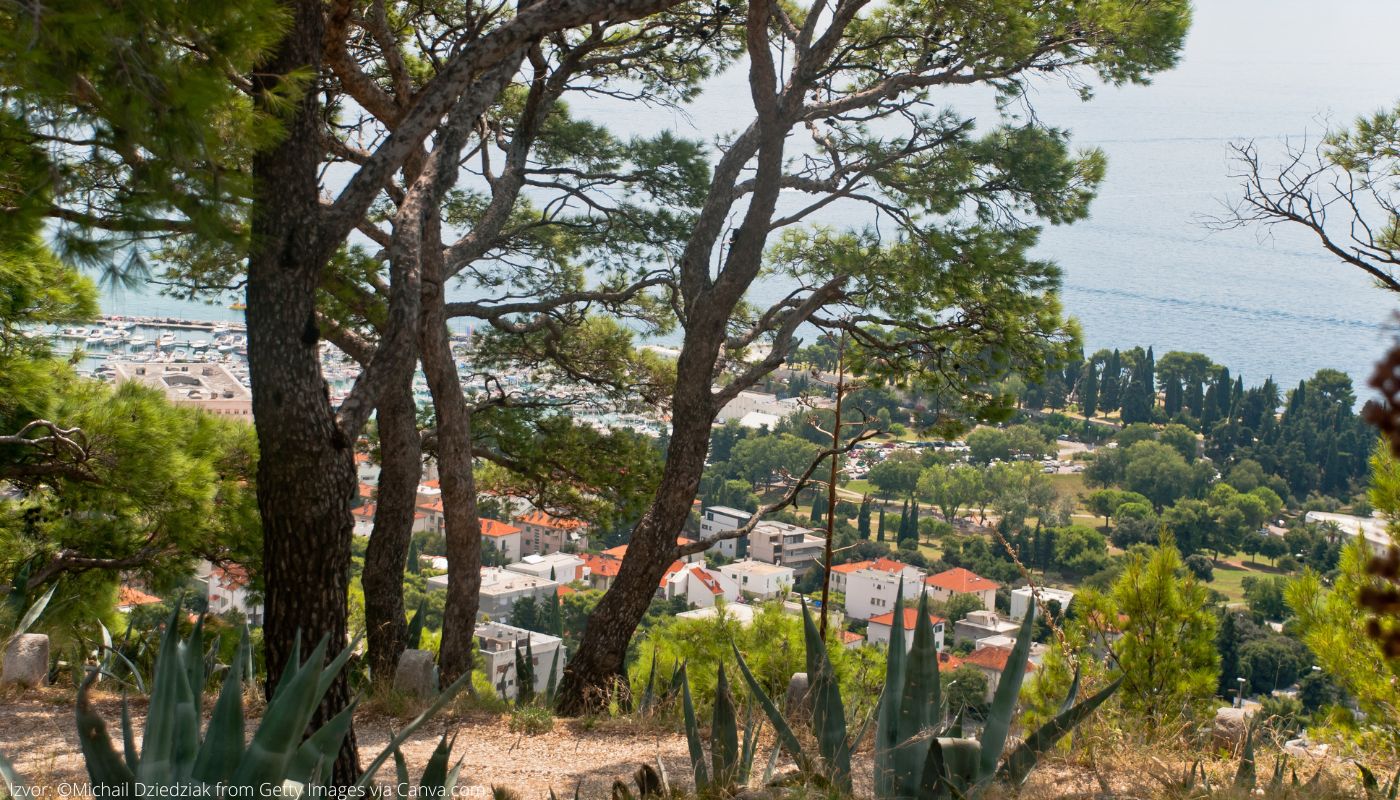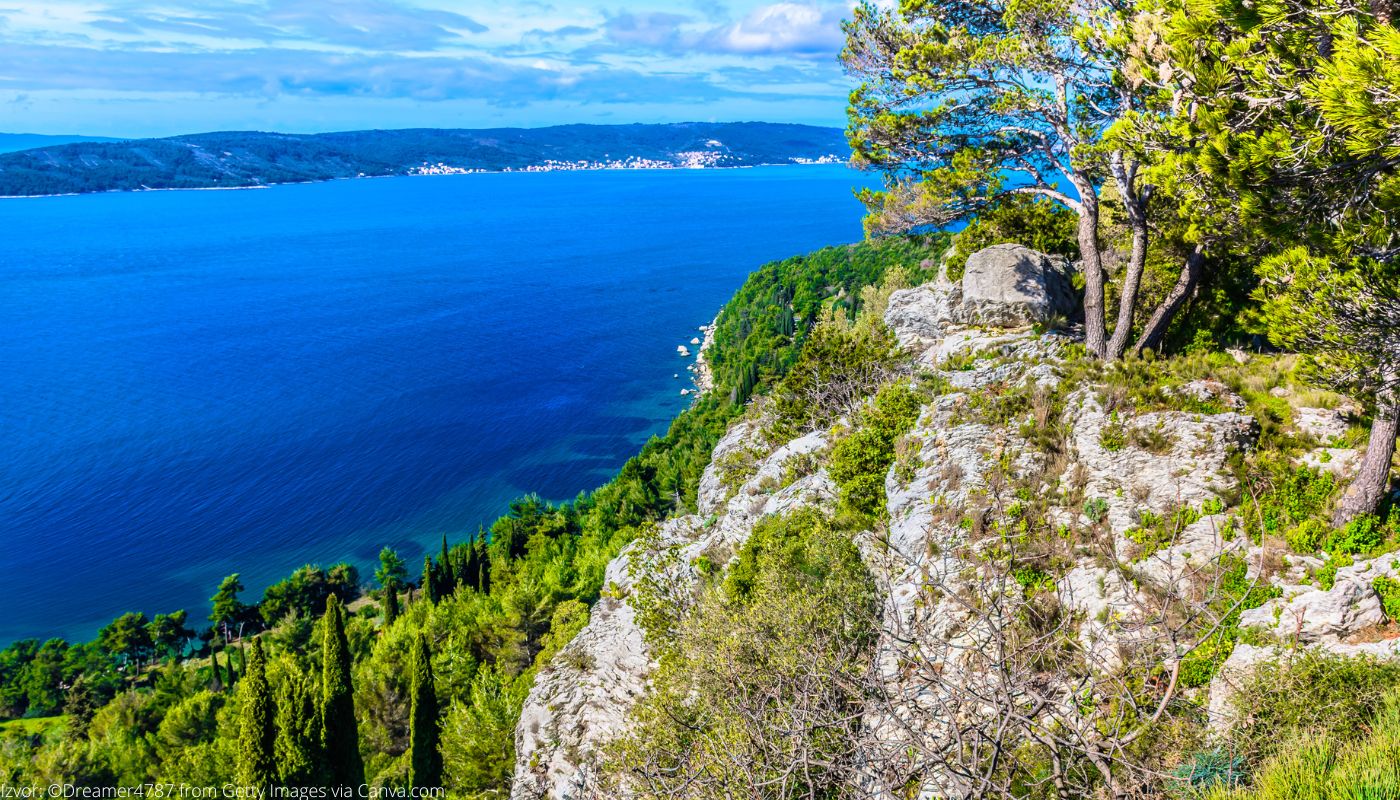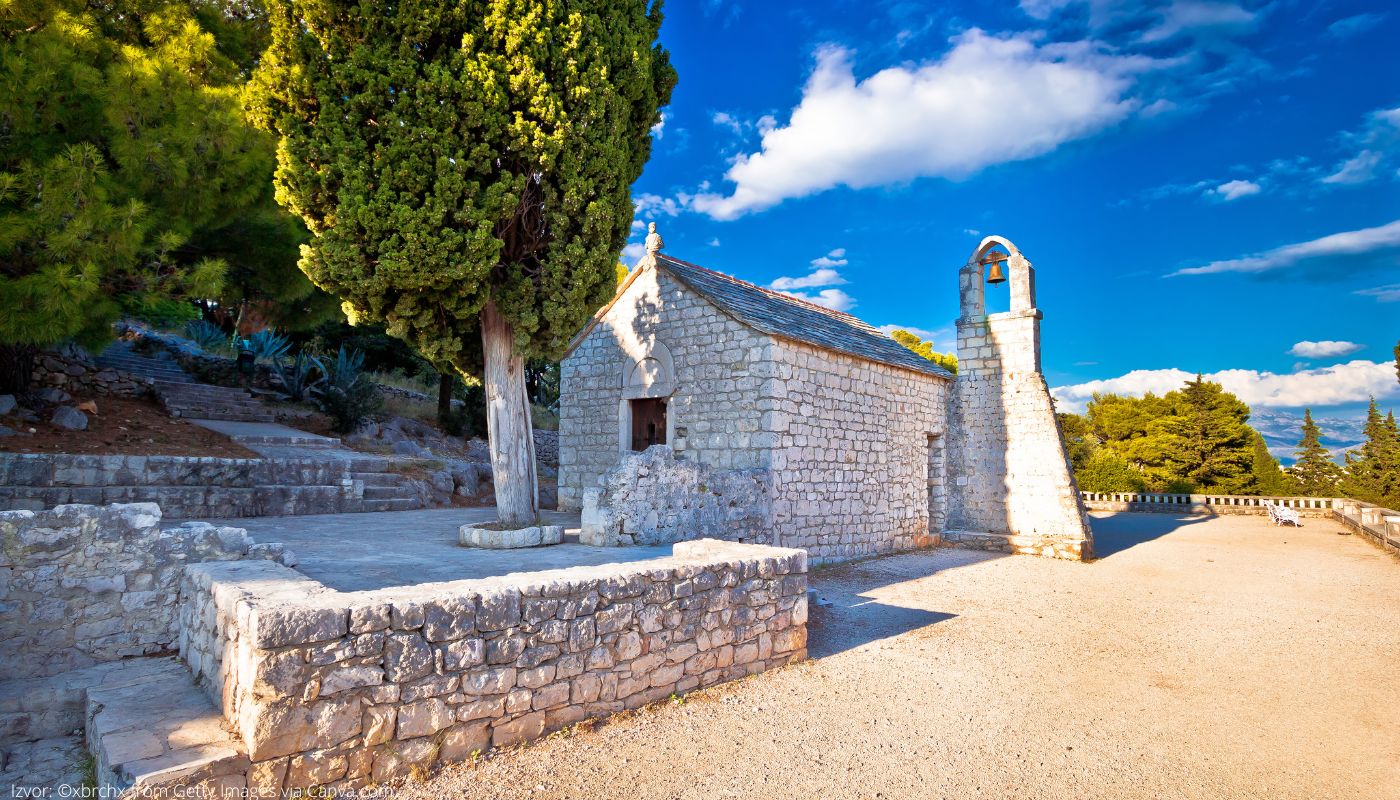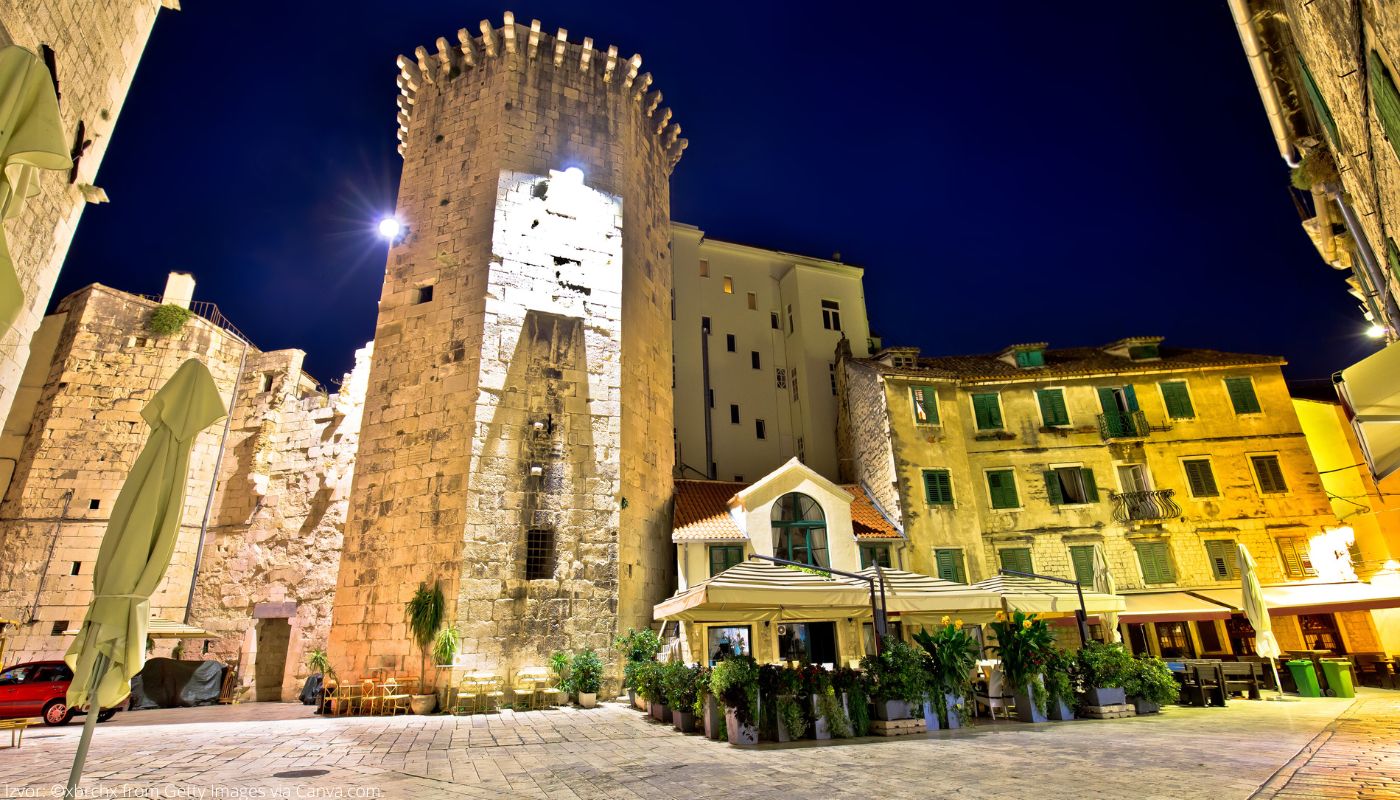When to visit Split?
- During spring - If you are not a big fan of crowds and really strong sun, Split offers you a variety of opportunities, activities and attractions that you can visit during the spring as well. We can definitely say that April and May are the perfect months to visit this Croatian coastal city.
- During summer - However, the atmosphere and experiences are certainly different during the hot summer months. Incredible coasts and even more beautifully decorated beaches entice tourists worldwide to flock during the summer and spend their best vacation days there. Right then, during the summer season that starts a little before June and ends at the end of August, Split will present itself to you in its full glory. Visit some of the famous events that take place here, and we guarantee that you will not regret it
How to get to Split?
- By car - If you went on vacation with your own vehicle, the fact that this wonderful coastal Croatian city is located at the junction of various important international and domestic land, water, and air routes will make your journey easier. If you are coming from the direction of Sovenia, the best and fastest way to reach Split is via the E65/E71 highway that runs north-south and starts in Malmö, Sweden, and ends in Chania, Greece. So this road is convenient both if you are coming from the north and if you are coming from the south. If you are coming from the direction of Serbia, more precisely from the east, it would be best to use the E70 highway to Zagreb, where you join the E65 highway.
- By bus - Split is a city that is characterized by excellent connections between intercity and international traffic. By bus you can reach all major Croatian cities, as well as the capitals and major cities of the surrounding countries. If, for example, you are in Zagreb and want to reach your destination Split as comfortably and quickly as possible, we recommend that you get on one of the fast and new buses and the journey will seem like a blink of an eye. The drive from Zagreb to Split takes about 5 hours and 15 minutes on average, and the ticket price ranges from 18 EUR to 25 EUR. If you are leaving from Belgrade, you need to allocate around 54.77 EUR for the trip, while from Ljubljana you need around 42 EUR.
- By plane - Split Airport is located not far from the city center, and transportation from the airport to the center, as well as from the port to the center, is provided and takes place every day according to a certain schedule, depending on whether it is summer or winter season. There is a direct line that takes you from Belgrade to Split, and the flight itself usually takes about an hour and a half, while one of the cheaper ticket prices is around 112.9 EUR. As for the flight from other Balkan capitals such as Podgorica, there is a direct flight, and the ticket price is somewhere around 120 EUR. However, we must emphasize that the order and frequency of flights changes, according to the season in which you decided to visit Split. For more information, call the airport in Split at +385 21 203 555.
- By boat - Since Split is a Croatian city located on the coast of the Adriatic Sea, it is not surprising that this fantastic city can also be reached by water, by boat. The port in Split is connected to many important ports such as the one in Dubrovnik. For more information, you can call Jadrolinija.
Activities for tourists in Split
- Nature tour - Indeed, one of the most fascinating things in this landscape is precisely the diverse nature that shows its full splendor to anyone who gives it even a small chance. Day trips are the perfect opportunity to get to know the surroundings of Split. One of the most popular excursions is certainly the one that leads to Golden Rat and the nearby sandy beaches that blend with the turquoise color of the clean Adriatic Sea. This almost idyllic picture will put a smile on your face, so we recommend that you never miss one of the excursions. Be sure to visit Zlatni Rat, Brela, Solta, Milna and Paklene Otoke. The most famous of all locations is Zlatni Rat, which is located in the south of Brac, on the very coast. Due to its unusual appearance, it attracts more and more visitors every year. The beaches and the sea are extremely warm, and your view will spread over an incredible hilly pine forest and a high mountain.
- Activities on the water - As the geographical location dictates, this is perhaps one of the most favorite activities of tourists visiting Split. Swimming in the sea, looking at the open sea or lying on one of the famous beaches such as Bene beach or Ježinac beach, the choice is yours. You will surely relax and completely renew your spirit and body. However, there are also plenty of activities that are perfect for those who are addicted to some adrenaline sports, such as water skiing, tire or banana rides, paragliding and the like. However, if you like to sit and enjoy, you can rent one of the pedal boats, or take a ride on the great and challenging scooters.
- Diving - Diving is one of the most interesting activities offered by the city of Split, precisely because of the beauties that are hidden far away in the heart of the Mediterranean. This attraction gives you the opportunity to discover what is on the other side of the blue, on the other side that is inaccessible to the eye of an ordinary observer. Surrender to adventure and embark on an unforgettable journey that will reveal to you a new, so far unknown, world, a world where the sea is both the beginning and the end. One of the favorite tours is the diving tour in the Trogir Archipelago, which departs from either Split or Trogir. The price of the tour is around 50 EUR. The tour of the underground beauties itself lasts 2 hours, and during that time you will be accompanied by one of the best instructors. All diving equipment is included in the price. The tour itself is suitable for both children and adults who receive a short course, after which they are taken on a smaller dive at a depth of 6 to 10 meters.
Events and festivals in Split
- Mediterranean Film Festival - The Mediterranean Film Festival has been held in Split for 6 years in a row. This festival is known for showing films from the Mediterranean area, which have their premiere in Split, and cannot be seen in regular cinema editions. It definitely occupies a bigger and more important place in the cultural world and life of Split itself. The Mediterranean Film Festival takes place every June.
- Split summer - Split summer is an art festival that has been held since 1954 and has a great reputation among people who are at the very top of culture, but also among ordinary people. Along with the famous Dubrovnik Summer Games, this festival holds the title of the longest organized festival, which presents on its stages a classical spectrum of arts such as: opera, ballet, drama, concerts. Therefore, this dantastic festival offers a wide range of stage performances from jazz and film revues to exhibitions, performances and street theater.
- Days of Diocletian - An exceptional event that serves as a time machine because it takes visitors back to the famous time when the Roman emperor Diocletian walked through the city. On the streets along the entire city, the legions, Diocletian himself and the chariots passing through the Peristyle and the Riva where Diocletian's rulers and their families greet the assembled. Drummers, Roman musicians and fanfare can be heard throughout the city. Then, with the entertainment of street musicians, you can enjoy the national gastronomic offer.
- Cro Patria - This festival is unique in the world because it promotes choral singing, but also contemporary choral creativity. Cro Patria is organized by the Musical Youth of Split and is an international project in which choirs, poets, judges who give grades and people from Croatia and other countries participate.
- Mrduj regatta - This regatta is organized by JK Labud every year on the first weekend in September. The Mrduj regatta is one of the oldest sailing regattas in Europe. The regatta was named after the island of Mrduja. That very island is a turning point and an auxiliary goal on the 22 km long route that starts from Split to Mrduja and back to Split. The first regatta was organized in September 1927.
Activities for kids in Split
- Workshops - Your children can participate in the workshops of numerous museums and galleries where they learn about the city's culture and history in a fun and educational way. Within these workshops, organized by the Museum of the City of Split and the Art Gallery, children can express their creativity by creating works of art using various painting techniques and virtual practice rooms.
- Diocletian's Dream - Diocletian's Dream is a very exciting virtual reality experience where this technology brings you closer to the life and existence of the emperor himself and his magnificent palace. Indeed, this experience will introduce you to the history of all generations. The film shown lasts 15 minutes and is played every 30 minutes.
- Playrooms - Children in Split, apart from the workshops, can also spend their time in different playrooms equipped with the latest equipment, such as slides, trampolines, and ball pools. On the site of the Kids Jungle playground, see the great offer that awaits your little ones.
What to see in Split?
- Diocletian's Palace - Diocletian's Palace is one of the largest and best preserved monuments of Roman architecture in the entire world. It was built and was conceived as a combination of a summer house and a military camp that was divided into four parts by two main streets. The southern part of the palace was intended for the emperor, for his apartment, while the northern part was designated for the imperial guard, army, servants, and storage. When you walk through this magnificent and historically important palace, also visit the Cathedral of St. Dui, the Golden Gate, the Silver Gate, the Iron Gate, the Honey Gate, the Vestibule and the Temple of Jupiter.
- Markets - The central parts of Split, which represent the very heart of the city, are precisely the markets. One of the most famous is the market, which is located next to the wall of Diocletian's palace, in the east and around the church of St. Dominic. Year after year, this place is more and more popular among tourists from all over the world. If you want to feel the spirit of the city, go to the market. The market used to be on the Fruit Square, but with the growth of the city and the market, it grew. If you go there, you will hear shouting, swearing, laughter, and your sense of smell will be captivated by the various smells of Mediterranean fruits, vegetables and other fruits. We recommend that you also visit the peškaria.
- Squares - Be in Split at least for a day and sit for a coffee in one of the famous squares. The square or People's Square dates back to the 13th century when it was first mentioned. It is interesting that this part was the first inhabited part of Split above the walls of Diocletian's palace. For hundreds of years, this area called the Square has been teeming with life. There is also an interesting town hall building built in the Gothic style, where the government was once located. There is also Trg Republike, popularly known as Prokurative, a large square located west of the Riva. It is interesting that the square is only open to the south, thus offering a wonderful view of the port and the Riva. The construction was initiated in the 19th century by Antonio Bajamonti, one of the most famous mayors in the history of the city.
Accommodation in Split
- Hotels - There are several top-quality hotels in the city, and you will not regret it if you decide to stay in them. Some of the best-rated hotels in Split are: Central Square Heritage Hotel, Piazza Heritage Hotel, Pellegrini Luxary, Antique Split, Bajamonti, Mijama suites. to reach a price of up to 30,000 RSD (255.60 EUR).
- Hostels and private accommodation - However, if you want somewhat different accommodation, which is not hotels, Split offers you that possibility as well. There are many apartments in the city that offer different services. The price varies from accommodation to accommodation. The price in hostels starts from 3,720 RSD (31 EUR) and up, while the price of apartments starts from 5,700 RSD (48 EUR) and up. Some of the best rated are: Hostel Elli, Hostel Split Backpackers, En Route Hostel, Apartments Znjan, Split hostel Fiesta Siesta, Apartment Dora.
Phone numbers of important services
- Emergency services 112
- Ambulance 194
- Police Department 192
- Fire department 193
- HAK 198
- Rescue at sea 195
- Port Authority +385 21 645 476
- Jadrolinija +385 21 338 333
- General Information Service 18981
Where to eat in Split?
- Restaurants - In Split, you can find national and international cuisine at almost every corner. The best rated restaurants in Split are: Downtown Grill Split steak & seafood, DeListes restaurant Split, Šug Restaurant, Apetit, Nevera Tavern, Chops Grill - Steak & Seafood, Villa Spiza.
- Pizza shops - When you want this Italian specialty, stop by the pizzerias Konoba Pizzeria Split, Pizzeria Gušt, Mirakul dostava pizza, Pizzeria Podion Konoba, Pizzeria Galija, Pizzeria Maslina, Pizzeria Velo Misto No. 1.
- Fast food and bakeries - The best pastries and fast gourmets await you at Fast food Popeye, Fast Food Lozo, Ježurko Fast Food, Fast Food Popaj Poinsanska, Fast Food Bublica, Fast food ja&ja, Pekara Split, Pekara Split 2, Pekarnica Babić, Pekara Rita Split, Bakery Good morning Split Firule, Mlinar Split Narodni trg, Bakery Milaković.
- Pastry shops - Treat yourself to the best cakes from confectioneries Sara, Bologna, Orient, or Bueno.
Where to go out in Split?
- Cafes and pubs - If you love a good pop or rock concert or are a fan of fun music, visit some of the following cafes and pubs in Split - Kavana Procaffe, D16 Coffee, Žbirac, Caffe bar Split 1700, Vintage bar, American dream Caffe, Cafe Versi, Caffe bar Momento, Bar Albatros.
- Clubs - You are guaranteed a good time in the following discos located all over Split - Story Club, Disco Club 305 A.D., Kocka, Academia Club Ghetto, The boss Club.
Transportation and taxi in Split
- Public transport - The city has a highly developed network of city transportation. There are several carriers, so the ticket price varies, but it is around 2 EUR.
- Taxi service - There are many taxi carriers, and these are just some of them: Yellow Taxi Split, Auto Taxi Split, Airport Taxi Split, Taxi Boat Split 0-24, CroTaxi Panda.
Parking in Split
- 708211 - I zone - red zone
- 708212 - II zone - blue zone
- 708213 - II zone - green zone
- 708214 - III zone - yellow zone
Surroundings of Split
- Biokovo Nature Park - According to the opinions of different people, the park is certainly one of the most attractive nature parks in the whole of Croatia. It stretches for about 30 km above the Makarska Riviera and includes almost the entire Biokovo, which is part of the Dinarides mountain massif characterized by high and steep rocks. The highest peak is called Sveti Jure, which is located at about 1,762 meters above sea level. A narrow paved road leads to the top of the mountain, so it is also possible to reach it by car. However, if you prefer hiking and mountain climbing, climbing mountain trails really gives you an incredible sense of fulfillment.
- Blue Cave - The Blue Cave is located on the island of Biševo, which, in turn, is located near Vis and is a geomorphological phenomenon of truly astonishing beauty. Therefore, it is not surprising that this is one of the most visited tourist attractions, as it is visited annually by about 100,000 tourists. The cave has two openings, the smaller one of which has been enlarged so that it could be entered with a boat with oars. Through the second, naturally larger opening, which is located on the south side below sea level, sunlight passes and together with the salt water creates an incredible blue color, after which this cave also got its name. During July and August there are often crowds around the entrance, so we suggest you avoid visiting this amazing phenomenon then.
- Cetina River Canyon - This canyon is one of the most beautiful canyons in Dalmatia. It is located near the town of Omiš, where the Cetina River flows into the beautiful Adriatic Sea. Definitely, this canyon has something to offer its visitors, and only some of its features are the imposing nature of the canyon itself, as well as the extremely steep rocks several hundred meters high. The very sight of the river will take your breath away. Its emerald color really seems painted, almost as if it is impossible for such a thing to actually exist. Visit it and see for yourself.
History of Split
- Name - Split has had several different names throughout its long history, so in history we meet it under the name Aspalatos or Spalatos in Greek, Spalatum in Latin, Spalato in Italian, Spljet in Old Slavic, Split in Serbian. The origin of the name can be found in the brnistra plant, which grows here in abundance. According to another theory, the name is derived from a Latin word that is either a diminutive for palace or a superlative.
- Rule - The origin of the city is linked to its most famous building from the 4th century - Diocletian's Palace. It is believed that this area was a colony of Greece, even before Diocletian himself. After Roman rule, Slavs and Avars came to this area, then Byzantium ruled, and after that the city belonged to Croatia.
Geography and climate of Split
- Geography - Split is located on the Adriatic coast in central Dalmatia and is the largest city in Dalmatia and the second largest city in Croatia. In the hinterland of Split there is the mountain Mosor and the hill Kozjak with all its incredible beauty. In front of Split is the open sea and the three islands of Brač, Hvar and Šolta, with which it is connected by waterways. Ferries from the port of Split were often, and still are, the island's only connection with the mainland of Croatia. The city is the administrative center of Split-Dalmatia County. It is included in the UNESCO World Heritage List.
- Climate - Due to its favorable geographical position, Split is protected from the influence of the continental climate by the mountain massif. Therefore, it is not surprising that Split is characterized by a good and favorable climate. Local and seasonal winds affect the Mediterranean climate that governs these areas. Because of this, Split and its surroundings belong to one of the sunniest regions of the central Mediterranean, with almost 2,700 hours of sunshine per year. In fact, this makes this city the warmest city on the northern coast of the Mediterranean, where the average annual temperature is somewhere around 15.7 degrees.
Demographics of Split
- Residents of Split: According to the 2011 census, the city of Split has as many as 178,102 inhabitants, of which 167,121 live in the city itself. In this census, it was established that the majority of Croats live in the territory of the city of Split, followed by Serbs, Bosniaks, Montenegrins, Slovenians, Macedonians and others who remained unknown and those who did not declare themselves.
Tradition and culture of Split
- Tradition - Split Cathedral, Cathedral of St. Duja, Church of the Holy Trinity, Monastery of St. Francis, Church of St. Sava are the places where you will best feel the importance of the Catholic faith in these parts of Croatia.
- Culture - In order to get better acquainted with the cultural heritage of this Croatian city, do not miss to visit - Split City Museum, Ethnographic Museum, Archaeological Museum, Croatian Maritime Museum, Meštrović Gallery.











